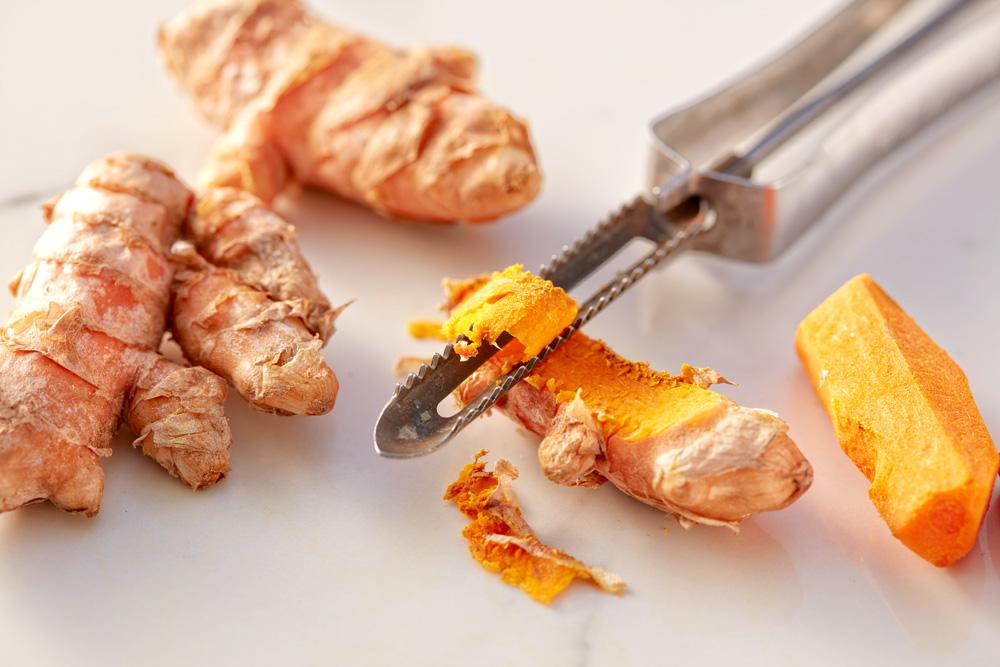Trending towards turmeric.
The best way to understand why turmeric is so popular is to realize it’s always had a big fan base. The appeal began at least 4,000 years ago and not just as a cooking ingredient. Historically, turmeric has also been valued as a medicine, cosmetic, even a dye. For everyone these days who’s brewing up turmeric tea as a digestive aid or blending it into smoothies for anti-inflammatory purposes, there are many thousands more worldwide enjoying turmeric for its two essential characteristics — flavor and versatility.
Root for the rhizome.
You’ve probably seen turmeric most often as a yellow-orange, finely ground dried powder. But you can also find it fresh in the produce section of a grocery store. It resembles fresh ginger, and though botanically they’re related, neither are roots. Technically, they’re rhizomes which are horizontally growing, underground stems of the plant. Galangal is also related within the Zingiberaceae family, native to tropical areas of the world.
To prepare fresh turmeric for cooking, use a vegetable peeler to remove the skin, and then slice, mince or grate it depending on the recipe. The flavor of fresh turmeric is peppery and slightly bitter. It’s aromatic with a pungent, earthy smell. You may want to wear kitchen gloves to avoid staining your fingertips. Turmeric gives yellow mustard and curries their bright colors, and it will readily impart its distinctive hue to hands, cutting boards and countertops.
All together now.
Turmeric is a true team player in the world of spice. It blends and mixes well with a full range of spices including allspice, chilies, coriander, cumin, nutmeg and more. In this recipe for Turmeric Curry Chicken, it lends its subtle but signature flavor to a vibrant, hearty sauce made with fresh ginger, garlic, lime, brown sugar, cinnamon, anise and coconut milk. You can begin combining ingredients for the sauce with a mortar and pestle, or use a small food processor. It’s a treat for your senses during preparation and cooking and especially when dinner is served.
Color your world.
Historically, great discoveries have been made in pursuit of new and different spices. Where will turmeric take you? Oven Roasted Chicken And Veggies With Turmeric is an excellent starting point. Let your voyages of creative exploration begin with turmeric leading the way.












